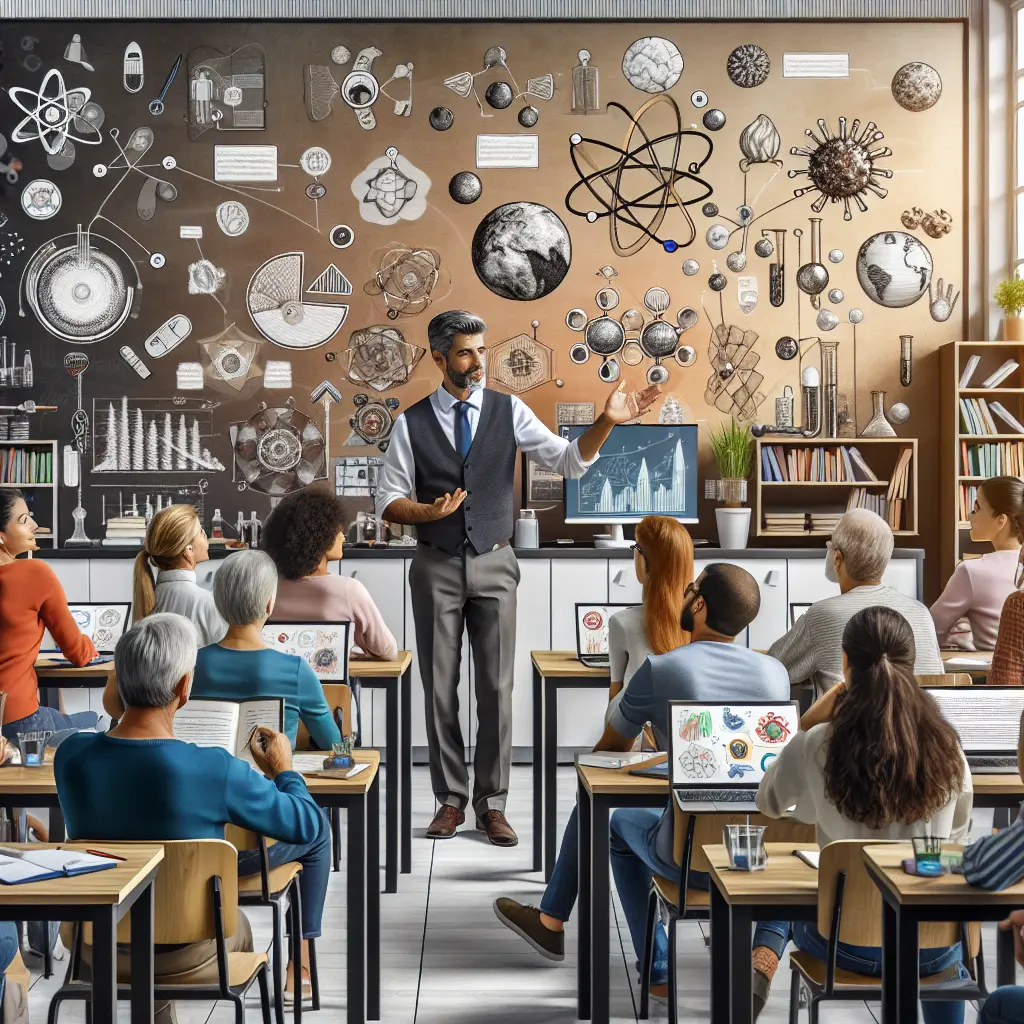
In a world where the boundaries of traditional education are being constantly pushed by digital advancements, figures like Mark Rober are revolutionizing how adults engage with and understand science. Known for his compelling YouTube science videos, Rober has become a beacon of innovation in educational content creation, particularly in enhancing adult science literacy through engaging science lessons.
The Advent of Engaging Science Lessons
Mark Rober's approach to science education marries entertainment with education, making complex concepts accessible and enjoyable. His methods underscore the importance of engaging content in STEM learning for adults. By leveraging the power of visual and interactive science experiments, Rober captivates his audience, ensuring that the lessons are not only educational but also memorable.
One of the most striking examples of his innovative teaching methods can be seen in his recent project where he built a puzzle-solving robot. This robot can solve puzzles 200 times faster than the most skilled humans, a feat that not only showcases technological prowess but also makes learning about robotics and programming intriguing for viewers (Source: Mark Rober’s YouTube Channel).
YouTube Science Videos: A Gateway to Science Literacy
YouTube has emerged as a critical platform for science communication, and creators like Mark Rober are at the forefront of this transformation. His YouTube channel provides a plethora of videos that delve into various scientific topics, making them relatable to everyday experiences. This approach helps demystify science for adults who might have found the subject intimidating or inaccessible in traditional educational settings.
Moreover, Rober’s collaboration with other YouTubers like MrBeast amplifies his impact. For instance, their #TeamSeas initiative, which aimed to remove trash from oceans and beaches, not only raised awareness about environmental science but also actively involved the community in scientific and environmental action, removing over 34 million pounds of trash (Source: #TeamSeas Official Website).
The Role of Interactive Science Experiments
Interactive science experiments are central to Mark Rober’s educational strategies. These experiments provide hands-on learning experiences that foster deeper understanding and retention of scientific principles. For example, Rober’s use of everyday items to demonstrate physics principles in his videos makes the learning process more relatable and less daunting for adults re-engaging with science education.
Educational Content Creation and Its Impacts
The meticulous craft of educational content creation that Rober employs involves not only understanding the scientific method but also mastering the art of storytelling. This dual focus ensures that the content is both scientifically accurate and engaging. As a former NASA engineer, Rober brings a wealth of knowledge and credibility to his videos, which enhances trust and interest in the scientific content he presents.
Science Communication in the Digital Age
In today’s digital age, effective science communication must meet learners where they are. Rober’s strategies exemplify how digital platforms can be harnessed to expand science literacy among adults. By using platforms like YouTube, he reaches millions globally, breaking geographical and socio-economic barriers that often restrict access to quality science education.
Global Impact and Future Directions
Looking ahead, the integration of AI and machine learning in educational tools presents an exciting frontier for adult science literacy. Rober’s puzzle-solving robot not only serves as a powerful tool for engaging viewers but also hints at future possibilities where AI can be tailored for personalized learning experiences in science education.
Furthermore, partnerships like the one between Chess.com and CrunchLabs on the Masters tour highlight the expanding scope of digital platforms in making learning more interactive and widespread (Source: Chess.com News). Such collaborations signify a future where learning is increasingly collaborative and tailored to individual needs.
Challenges and Considerations
Despite these advancements, challenges remain in ensuring that these digital educational tools are accessible to all. There remains a digital divide that can hinder access to these resources for some adults. Addressing these disparities is crucial for truly democratizing science education through technology.
Moreover, as noted in recent discussions about media and environmental issues, such as the critique of the film 'Twisters' for not addressing climate change, there is a growing need for science communicators to integrate discussions about global challenges into their content more explicitly (Source: Environmental News Network).
Conclusion
In sum, Mark Rober’s methods for enhancing adult science literacy through engaging science lessons on YouTube serve as a model for educational content creation in the digital age. His innovative teaching methods and commitment to making science accessible represent a significant step forward in STEM learning for adults.
As we continue to navigate the complexities of educating in a digital world, figures like Rober demonstrate that with creativity, passion, and technological savvy, learning about science can be an enjoyable and enriching experience for adults across the globe.
Thank you for joining me on this exploration of Mark Rober's educational impact. Here's to making every adult's journey into science as exciting as a Mark Rober experiment!
Lucas Hammond